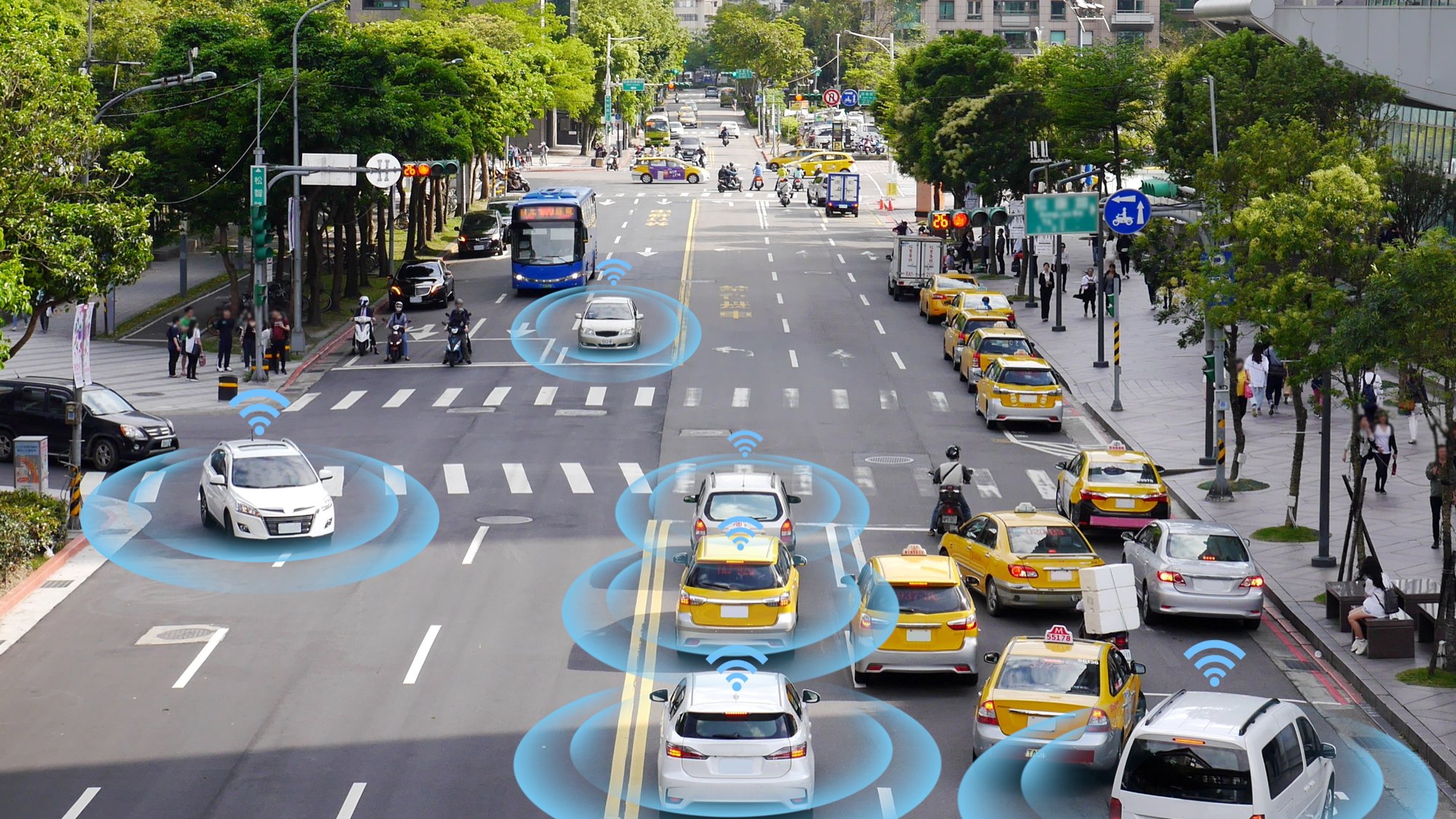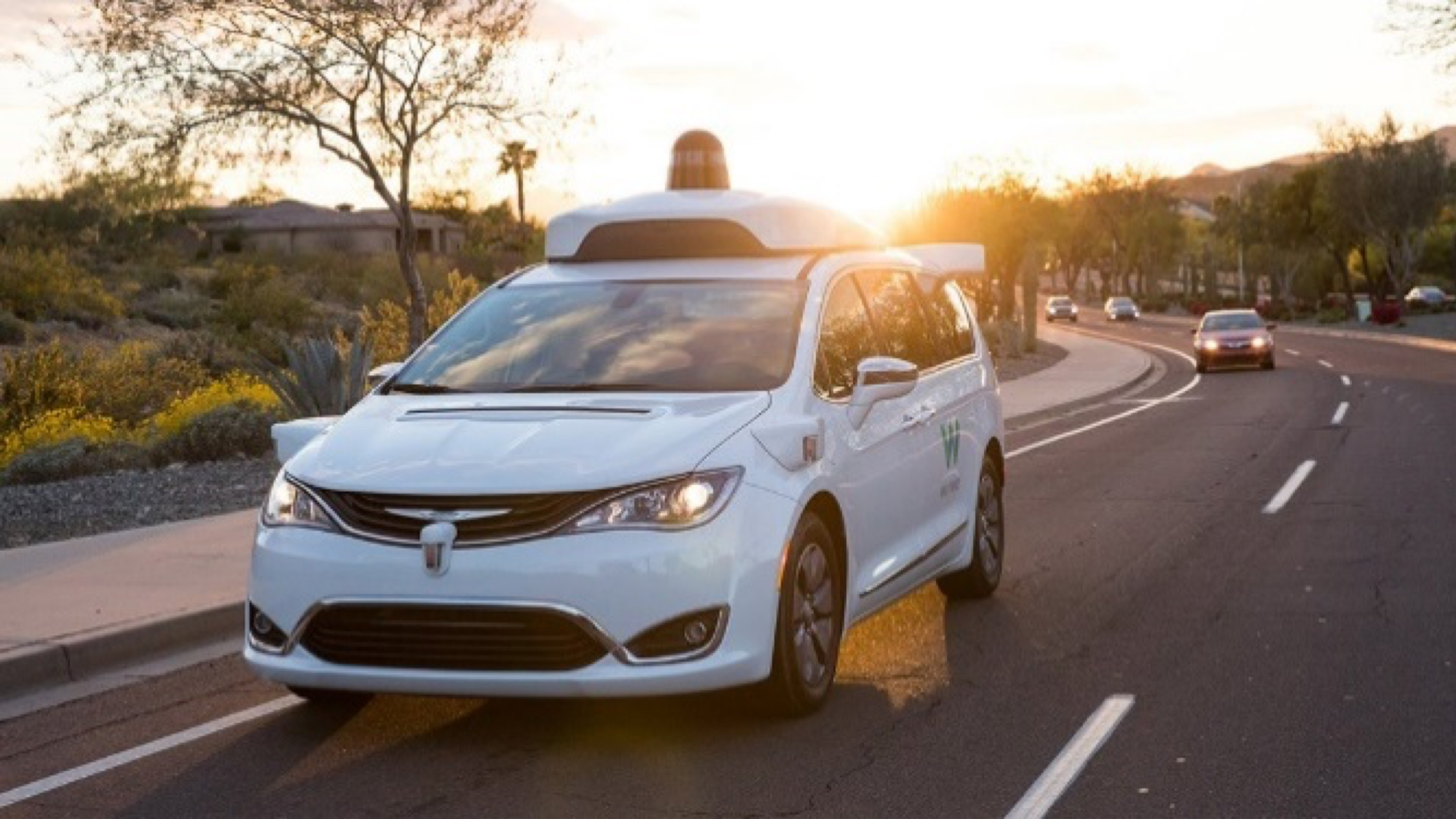
Forecasting the future of mobility
ASU’s TOMNET center explores public outlook on evolving transportation landscape

Above: A photo-illustration envisions a future scenario in which many people rely on autonomous vehicles and other advanced transportation technologies through a connected and shared system designed to increase travel efficiency. Experts foresee the possibility of such systems reducing the need for many people to own personal vehicles. Photo: Shutterstock
Designs, concepts and prototypes for technologies to make transportation more efficient and economical are under development in many research labs and automotive industry facilities. But innovations that improve performance and broaden options for transport are not enough to ensure progress in those efforts will fulfill their potential.
The success of technologically advanced means of automated movement of people, products and services depends just as much or more on public attitudes, values, perceptions and willingness to embrace new and different things.
Autonomous vehicles, or AVs for short, offer a particular case in point.
Often called self-driving vehicles, AVs are likely the most transformative of emerging technologies that will impact our evolving “transportation ecosystem,” says Arizona State University Professor Ram Pendyala, director of Teaching Old Models New Tricks, or TOMNET, a Tier 1 University Transportation Center sponsored by the U.S. Department of Transportation.
Equipped with arrays of sophisticated sensors and automated control systems that enable more acute awareness and responsiveness to surrounding roadway environments, AVs are potentially capable of driving more safely and skillfully than people.
Yet many people remain staunchly skeptical and uncomfortable with driverless vehicles, some saying they would never purchase or even ride in one. Others are eager to see AVs become widely used, says Pendyala, who is also director of the School of Sustainable Engineering and Built Environment, one the six Ira A. Fulton Schools of Engineering at ASU.
Preparing the public for emerging transportation scenarios
Some people look at AVs as “personal chauffeurs” that can make traveling easier by relieving them of the pressures of navigating traffic, says Sara Khoeini, TOMNET’s assistant director and an assistant research professor in the Fulton Schools.
Those who view AVs in a positive light see advantages such as being able to multitask while traveling, which could make commuting to jobs and long trips less laborious, Khoeini says.
Some react positively to the possibilities AVs present for ridesharing, while others have little interest in sharing vehicles — or in giving up their position of control behind the steering wheel, even though they acknowledge the safety benefits of automated transportation.
“Attitudes toward AV technology vary considerably among people with different socioeconomic characteristics and lifestyle preferences, with divergent perspectives on the extent to which the government should regulate the use and deployment of AVs,” Khoeini says.
Such varying viewpoints are challenging for transportation planning agencies whose job it is to accurately forecast travel demands, trends and choices.
It’s part of the mission of TOMNET to provide data and behavioral insights into how the public will or will not adopt and adapt to various new transportation technologies and services that continue to be rather unsettling to many.
The center’s efforts and its most recent findings are the focus of a June 12 webcast titled “The ABCs (Attitudes Behaviors Choices) of the Future of Mobility.”
The webcast sponsored by TOMNET will present results from a survey conducted last year in collaboration with D-STOP, another University Transportation Center led by the University of Texas at Austin, along with TOMNET consortium members that include transportation research centers at Georgia Tech, the University of South Florida and the University of Washington.

Contrasting attitudes about the use of autonomous “self-driving” automobiles reflect divergent views people hold about emerging travel-related technological advancements. Transportation agencies face challenges in getting people to accept and adapt to new and unfamiliar transport options, even when they would likely make travel safer. Photographer: Charlie Leight/ASU
Multiple factors shape attitudes toward alternative technologies
The TOMNET/D-STOP Transformative Technologies in Transportation (T4) Survey was distributed to a random sample of residents in the Phoenix, Atlanta, Tampa, and Austin metropolitan areas and yielded responses from about 3,500 people through an online platform.
The results provide extensive data about public attitudes and sociological factors likely to shape the public’s responses to alternative mobility technologies and services, says Khoeini, who led the large multi-institutional survey project team that included Deborah Salon, TOMNET’s associate director and an associate professor in ASU’s School of Geographical Sciences and Urban Planning.
The survey results demonstrate the variance of views among the public. For example, among questions about AV acquisition, results from the Phoenix area sample show only 5% would be among the first to buy an AV while 52% said they would “eventually” buy one, and 43% indicated they would never purchase one.
Among those who would buy an AV, only 16% said they would not pay more for an AV than for an equivalent human-driven automobile. But a good majority prioritize safety — almost 80% agree AVs should be on the market only when they prove to be at least as safe as human-driven vehicles.
Would the ease of traveling in an AV increase how much people travel? Perhaps so, with 25% in the Phoenix area sample saying they would make more trips if they had an AV, and nearly 40% said they would travel more during peak traffic hours because AVs would allow them to do other things while traveling and to better tolerate traffic congestion.
In addition to autonomous vehicles, the survey covers public perspectives, opinions and preferences on mobility-on-demand services such as Uber and Lyft, and bike and e-scooter sharing systems such as Bird and Lime.
Guiding transportation planners on traversing uncertain territory
The project’s ultimate goal, Khoeini says, is to help pave the way for mobility technologies and services “to create a future transportation system that improves our quality of life.”
To do that, she notes, it’s critical to develop a strong data-based foundation for accurately predicting how people across society will be inclined to react to fundamental changes in transportation systems, both in the short and long terms.
“Metropolitan planning organizations and other transportation agencies around the country are grappling with uncertainty, trying to figure out how to plan for a future that may be radically different than what exists today,” Khoeini says.
“What kinds of scenarios should transportation professionals analyze when drawing up long-range transportation plans? What behavioral assumptions regarding the adoption of and adaptation to new and emerging transportation technologies are reasonable?” she says.
Pendyala says information the project provides can help transportation industries and mobility service providers respond to technological advances and changing consumer needs and preferences.
Survey results can also guide efforts to more efficiently and wisely move new technologies from the research lab to the marketplace and to help prepare the next generation of transportation professionals to address future sustainability challenges.
Denise Capasso da Silva, a civil, environmental and sustainable engineering doctoral student, has been a key member of the team, leading the way in designing and administering the survey. She is now analyzing and modeling the data as part of her doctoral dissertation research.
Other significant contributors included faculty members and researchers Chandra Bhat, Felipe Dias and Shuqing Kang at UT-Austin, Patricia Mokhtarian, Giovanni Circella and Yongsung Lee at Georgia Tech, and Michael Maness and Nikhil Menon at the University of South Florida.
“The ABCs (Attitudes-Behaviors-Choices) of the Future of Mobility” will be presented from 8 a.m. to 1 p.m. Pacific Time on June 12 in a live webcast on Zoom. See webcast details and register for the webcast, or go to the TOMNET website for details.
For more information, contact Sara Khoeini at [email protected]



































